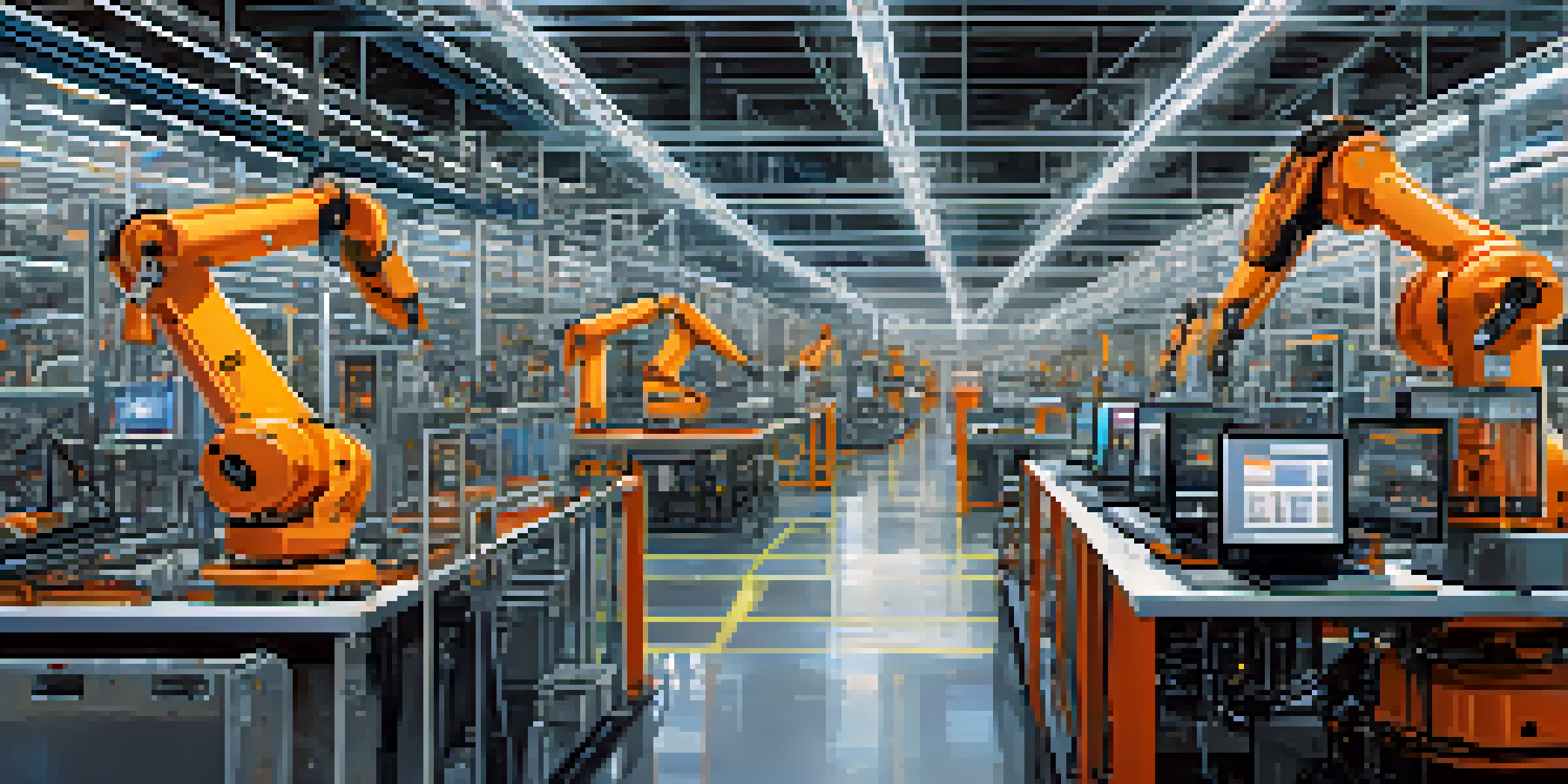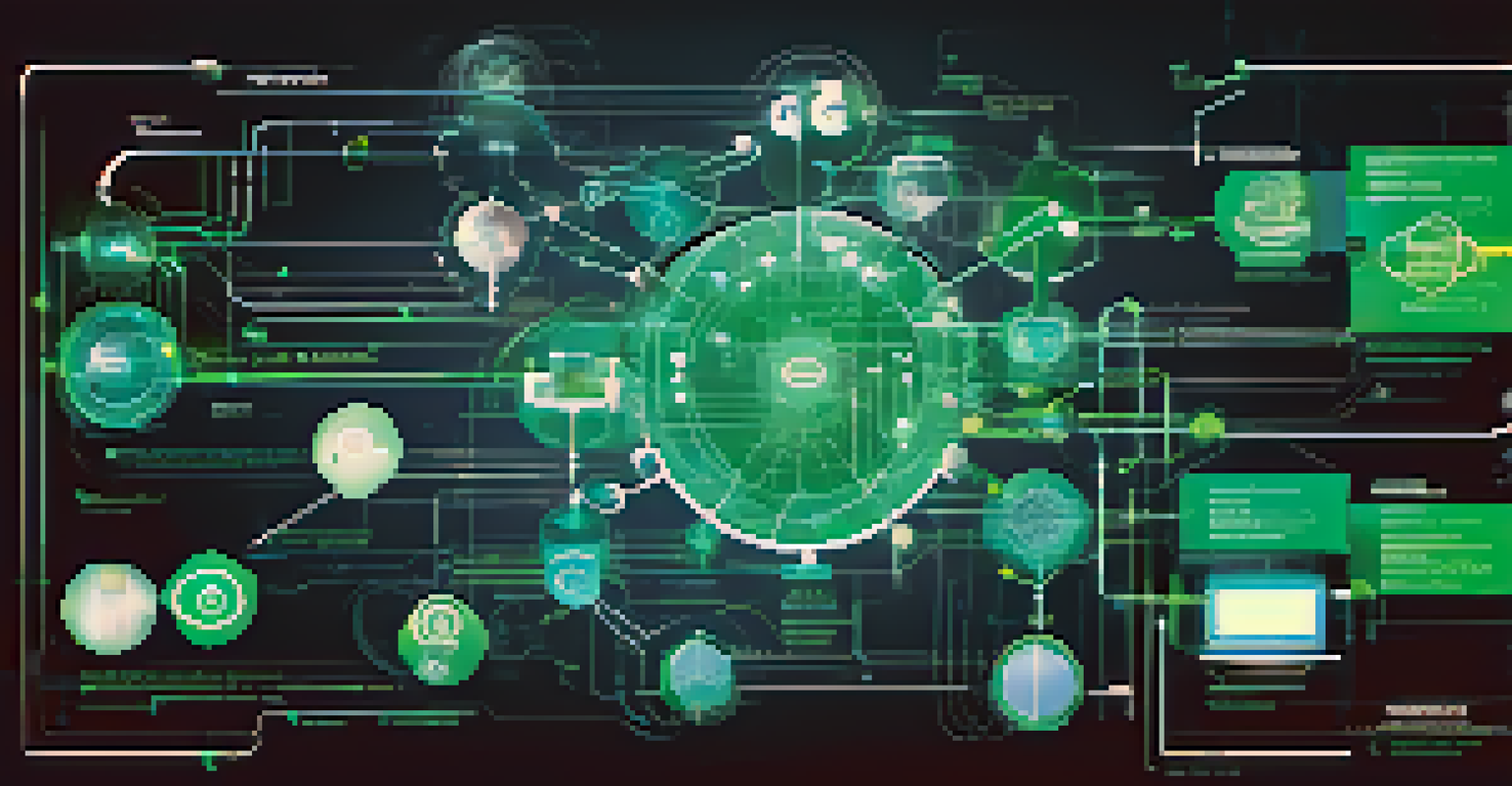The Interplay of Networking and Physical Processes in CPS

Understanding Cyber-Physical Systems (CPS)
Cyber-Physical Systems (CPS) represent a fusion of computation, networking, and physical processes. They are designed to interact with the physical world through sensors and actuators, effectively bridging the gap between digital and physical realms. This interplay allows CPS to monitor and control physical systems, making them crucial in areas like smart cities and automated manufacturing.
The future is already here – it's just not very evenly distributed.
To better comprehend CPS, think of a smart thermostat. It collects data about the room temperature and communicates this information through a network to a central system, which then adjusts heating or cooling accordingly. This seamless integration of networking and physical processes exemplifies how CPS operate in real-world applications.
As we delve deeper into CPS, it's essential to recognize that their efficiency depends significantly on the robustness of the networking component. A reliable network ensures timely data transmission, which is vital for the effective functioning of any CPS.
The Role of Networking in CPS
Networking is the backbone of any Cyber-Physical System, enabling communication between devices and the central control system. Without a robust network, the various components of a CPS would struggle to share data, leading to inefficiencies or failures. This is particularly evident in time-sensitive applications like autonomous vehicles, where real-time data exchange is critical for safe operation.

For instance, consider a fleet of delivery drones. These drones must communicate their positions, obstacles, and delivery statuses continuously to a central system. A strong network ensures that information flows smoothly, allowing for optimal route planning and real-time adjustments.
CPS Merges Digital and Physical Worlds
Cyber-Physical Systems integrate computation, networking, and physical processes to monitor and control real-world systems.
Moreover, advancements in networking technologies, such as 5G, are enhancing the capabilities of CPS by providing faster data transmission and reduced latency. This allows for more complex interactions between the physical and digital worlds, opening new possibilities for innovation.
Physical Processes: The Heart of CPS
While networking is vital, the physical processes in CPS act as the heartbeat, translating digital commands into tangible actions. These processes involve sensors that gather data from the environment and actuators that perform operations based on that data. The interplay between these physical elements and the network determines the overall performance of a CPS.
Technology is best when it brings people together.
Take, for example, an industrial robotic arm. It relies on sensors to detect its position and surroundings, and then it uses networking to communicate with the central control system. This system processes the information and sends commands back to the arm, allowing it to perform tasks with precision.
Understanding the nature of these physical processes is crucial for optimizing CPS. Engineers must consider factors such as response times and physical constraints when designing systems, ensuring that they can operate efficiently in real-world scenarios.
Challenges in Networking and Physical Integration
Integrating networking and physical processes in CPS is not without its challenges. One major hurdle is ensuring that the network can handle the vast amounts of data generated by physical processes without significant delays. Latency can severely impact the performance of systems that require real-time responses, such as medical devices or robotic surgeries.
Additionally, the physical environment can introduce complications, such as interference or obstacles that disrupt communication. For example, in an industrial setting, metal structures might impede wireless signals, requiring careful planning and design to ensure reliable connectivity.
Networking is Key for CPS Success
A robust networking component is essential for enabling real-time communication between devices in Cyber-Physical Systems.
Addressing these challenges involves a collaborative approach between network engineers and physical systems experts. By working together, they can develop solutions that maximize efficiency while minimizing potential disruptions.
The Future of Networking in CPS
As technology continues to evolve, the future of networking in CPS looks promising. Emerging technologies like edge computing are poised to enhance the capabilities of these systems by processing data closer to the source, reducing latency and bandwidth issues. This shift will allow CPS to respond more quickly to changes in their environment.
Consider a smart factory where machines communicate with each other in real-time. With edge computing, data generated by machines can be processed locally, allowing for immediate adjustments in operations without relying heavily on a central server. This not only speeds up processes but also increases overall efficiency.
Moreover, the integration of machine learning and artificial intelligence into CPS will further optimize networking and physical processes. These technologies can analyze data patterns, predicting potential issues and allowing for proactive maintenance, thus enhancing the reliability of CPS.
Case Studies: Successful CPS Implementations
Real-world examples of successful CPS implementations highlight the effective interplay between networking and physical processes. For instance, smart grids use advanced metering infrastructure that relies on real-time data exchange between servers and electricity meters. This ensures efficient energy distribution and helps in managing demand effectively.
Another compelling case is autonomous farming equipment. These machines use sensors to monitor soil conditions and crop health while communicating through a network to share data with other equipment and central systems. This synergy allows farmers to make data-driven decisions, optimizing yield and resource use.
Future Innovations Enhance CPS
Emerging technologies like edge computing and AI are set to optimize the interaction between networking and physical processes in CPS.
These case studies not only demonstrate the practical applications of CPS but also serve as inspiration for future innovations. They illustrate how effective communication between networking and physical processes can lead to improved efficiency and sustainability in various industries.
Conclusion: The Synergy of Networking and Physical Processes
In conclusion, the interplay between networking and physical processes is fundamental to the success of Cyber-Physical Systems. Each component relies on the other to function optimally, creating systems that can adapt and respond to their environments in real-time. As we continue to innovate and advance technology, understanding this relationship will be crucial.
Looking ahead, the integration of advanced networking technologies and intelligent physical processes will undoubtedly reshape industries, enhancing efficiency and productivity. This synergy will pave the way for smarter cities, more efficient manufacturing, and improved healthcare systems.

Ultimately, the collaboration between networking and physical processes in CPS not only drives technological advancement but also has the potential to significantly improve our daily lives. Embracing this synergy will be key to unlocking the full potential of Cyber-Physical Systems.